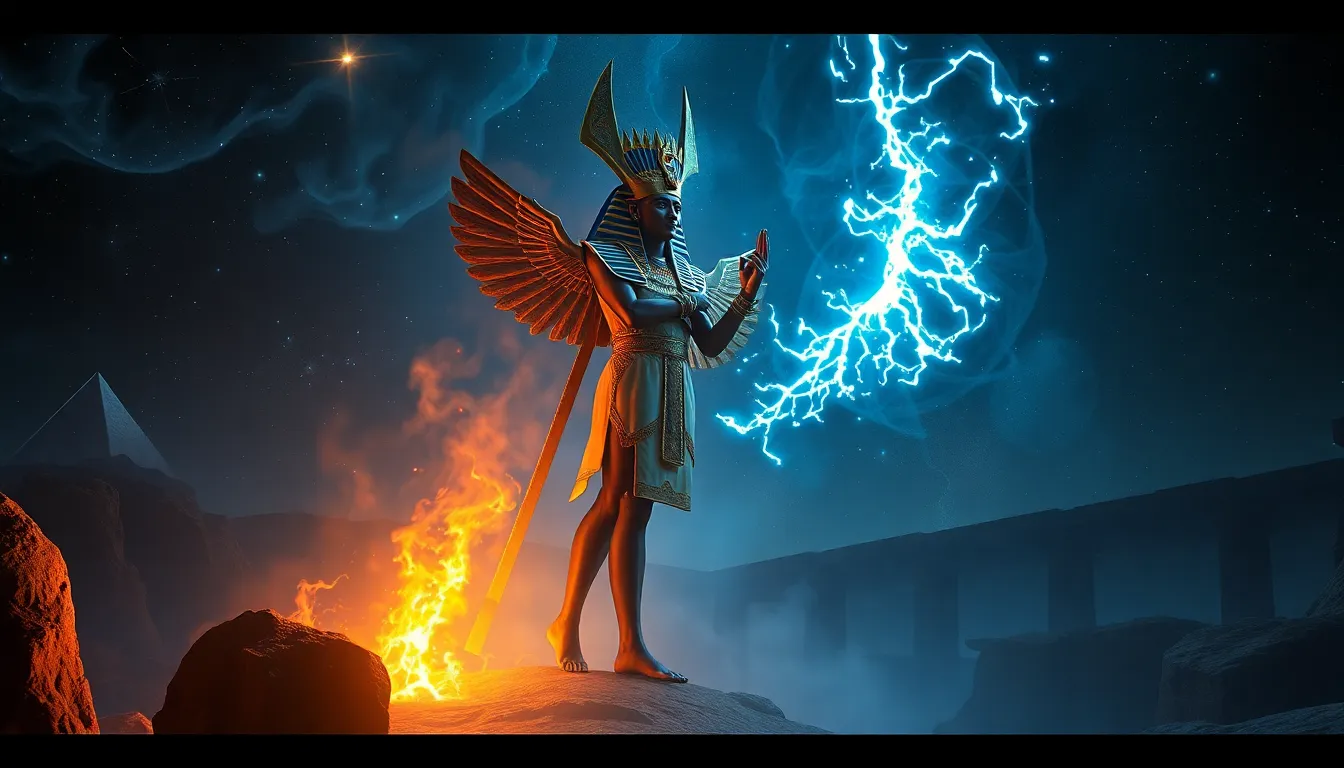The Myth of Osiris: Death, Resurrection, and the Afterlife
I. Introduction
In ancient Egyptian mythology, Osiris holds a place of immense significance as the god associated with the afterlife, resurrection, and the cycle of life and death. His story embodies profound themes that resonate deeply within the cultural and spiritual fabric of ancient Egyptian society. The importance placed on death, resurrection, and the afterlife reflects the Egyptians’ beliefs about existence beyond mortal life, shaping their rituals, practices, and worldview. This article delves into the legend of Osiris, exploring the key elements of his myth, the implications of his death and resurrection, and his lasting impact on Egyptian culture and modern interpretations.
II. The Legend of Osiris
The origins of Osiris can be traced back to the early dynastic period of Egypt, where he emerged as a central figure in the pantheon of gods. Osiris is often depicted as a mummified king, wearing the crown of Upper Egypt and holding the crook and flail, symbols of kingship and fertility.
As the god of the afterlife, Osiris represents the hope for resurrection and eternal life. His story involves several key figures:
- Osiris: The central figure who embodies death and resurrection.
- Isis: Osiris’s devoted wife and sister, who plays a crucial role in his resurrection.
- Seth: The god of chaos and disorder, responsible for Osiris’s death.
- Horus: The son of Osiris and Isis, who represents the rightful heir and avenger of his father.
III. The Death of Osiris
The betrayal of Osiris by his brother Seth is one of the most poignant moments in Egyptian mythology. Driven by jealousy and a desire for power, Seth tricks Osiris into entering a coffin, which he then seals and throws into the Nile, leading to Osiris’s death.
The symbolic importance of Osiris’s death cannot be overstated. It represents the inevitable cycle of life, death, and rebirth, a core principle in Egyptian belief systems. Furthermore, Osiris’s death plunges the land of Egypt into chaos, as the natural order is disrupted by Seth’s actions. The Nile, which is vital for agriculture and sustenance, becomes a symbol of mourning and despair.
IV. The Resurrection of Osiris
Isis, undeterred by the tragedy, embarks on a quest to bring her husband back to life. Her determination and magical prowess lead her to gather the pieces of Osiris’s dismembered body, which Seth had scattered. Through a series of powerful magical rites and rituals, Isis successfully resurrects Osiris, symbolizing the triumph of life over death.
This resurrection is significant not only for Osiris but also for the concept of the afterlife in Egyptian culture. Osiris’s transformation into the god of the afterlife solidifies his role as a protector and judge of the dead, ensuring that souls who have lived righteously can attain eternal life.
V. Osiris and the Concept of the Afterlife
Osiris’s role as the judge of the dead is a crucial aspect of his mythology. Upon death, souls are brought before Osiris to undergo the weighing of the heart ceremony. In this ritual, the deceased’s heart is weighed against the feather of Ma’at, the goddess of truth and justice. This ceremony has profound implications:
- If the heart is lighter than the feather, the soul is deemed worthy and granted eternal life.
- If the heart is heavier, it is consumed by the monstrous Ammit, representing the ultimate punishment.
The promise of eternal life for the worthy provides a powerful incentive for ethical living, shaping the moral framework of Egyptian society.
VI. Cultural Impact of Osiris’s Myth
The myth of Osiris had a far-reaching influence on ancient Egyptian religion and burial practices. The rituals surrounding death and mummification were deeply intertwined with the beliefs about Osiris, leading to elaborate burial customs aimed at ensuring a safe passage to the afterlife.
Osiris became a symbol of hope and renewal within society. His resurrection story offered comfort to those grieving the loss of loved ones, reinforcing the idea that death is not an end but a transition to another existence.
Moreover, comparisons can be drawn between the Osiris myth and other resurrection myths in various cultures, illustrating a universal human fascination with themes of death and rebirth. For instance, parallels can be seen with the stories of Jesus Christ in Christianity and the myth of Persephone in Greek mythology.
VII. Modern Interpretations and Legacy
In contemporary times, there has been a resurgence of interest in Osiris within various spiritual and esoteric traditions. His story resonates with those exploring themes of personal transformation and the cyclical nature of life.
Osiris has also made his mark in literature, art, and popular culture, often symbolizing the eternal struggle against death and the quest for immortality. His influence can be seen in various works that explore the human condition, mortality, and the afterlife.
The myth of Osiris remains relevant in today’s discussions about death and rebirth, encouraging individuals to reflect on their beliefs and the legacy they wish to leave behind.
VIII. Conclusion
In summary, Osiris’s significance in the context of death and resurrection is profound. His story serves as a powerful reminder of the human desire for immortality and the hope that exists beyond the grave. The enduring legacy of the Osiris myth enriches our understanding of human mortality and highlights the importance of myths in shaping cultural narratives about life, death, and the afterlife.
Ultimately, the myth of Osiris encapsulates the cyclical nature of existence, offering insights that continue to resonate with people across time and cultures.




